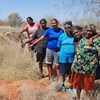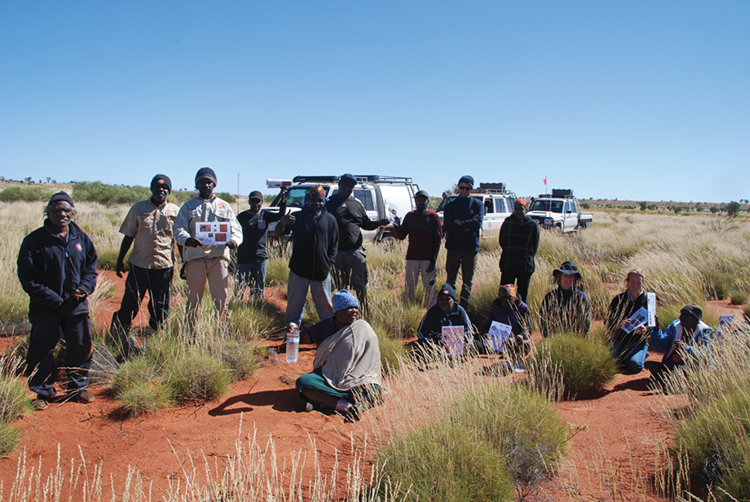
A Martu method for monitoring mankarr (greater bilby)
Tuesday, 20 August 2019Kanyirninpa Jukurrpa (KJ) Rangers in the Martu Determination have collaborated with Threatened Species Recovery Hub scientists to design a monitoring program for mankarr (the greater bilby). Martu people identified priorities for the bilby monitoring program, then worked with Dr Anja Skroblin from The University of Melbourne to co-develop a monitoring method which brings together Martu knowledge and practice with Western conservation science. Anja Skroblin talks about the development of the new bilby monitoring program.
Bilbies stay strong on Indigenous land
The greater bilby, recognised by its silky grey fur, long snout, large upright ears and white-tipped tail, is Australia’s last surviving bilby species. There are many Indigenous names for the bilby, and in the western deserts it is commonly called mankarr, ninu and muntarngarku. The bilby has disappeared from around 80% of its former range due to pressures created since European colonisation, including habitat removal, predation by foxes and cats, and changed fire conditions.
Indigenous land managers and Traditional Owners are playing a key role in securing the future of the greater bilby. Bilbies are now largely restricted to lands that are managed by Indigenous people in the north-west of the arid interior, which includes the Martu Determination. Recovery of the bilby is a priority for many of the Indigenous people who are its custodians and for state and federal governments. 
A Parnngurr Ranger marks down animal signs while carrying out a Martu mankarr search. Photo: A. Skroblin and KJ
Incorporating Indigenous knowledge
Our team of Martu Traditional Owners, KJ Rangers, including the Jigalong, Parnngurr, Punmu and Kunawaritji Ranger teams, and scientists worked closely together to co-develop a new monitoring program for bilbies which would be carried out long-term by the ranger teams.The method is underpinned by Martu knowledge of bilbies, bilby distribution, behaviour and the threats bilbies face, so an important first step was to record Martu knowledge of the bilby through interviews with Martu Elders and rangers.
Next, a fit-for-purpose survey method is key to any good monitoring program. The KJ Rangers identified the need for a new method and were instrumental in creating the “Martu mankarr search” method. The method builds on existing track-based survey methods and incorporates Martu language, knowledge of local bilby ecology, and Martu ways of searching the landscape.
The data collected by the survey method is based on Martu knowledge of desert ecology, and uses Martu classification of habitat types, fire patterns, food resources, threats and management practices that influence the presence of desert animals. By using Martu practices and terminology within the method, the method supports Martu in maintaining their knowledge and practices, and creates community ownership of the bilby monitoring program.
Once the survey method was developed and trialled, the team worked together to develop a monitoring plan which takes into account Martu perspectives and knowledge to identify the number and location of monitoring sites. Finally, a database was developed to manage the survey data and report on findings.
The contribution of the scientists ensures that the data collected by the program will be scientifically robust and can be analysed to tell how mankarr are doing over time and across different monitoring areas.
Outcomes
The bilby monitoring program was rolled out in 2018. Ranger teams reported that they prefer the new Martu way of searching for mankarr, and that the method was helping them to assess the management needs of sites for burning or feral animal control.
In their own words:
“I’m really happy with the new idea. It helps us, and I like that we come together and talk at the end.”
“From a ranger coordinator’s perspective, the new methodology is much more doable.”
“The method encourages an organic process of planning and thinking about fire, the landscape and mankarr needs.”
“The new method values Martu knowledge of mankarr and makes use of it.”
Over time, the monitoring program will detect trends in the bilby populations, so that Martu will know if numbers are going up or down or staying about the same over time. The program will also be able to look for differences between different monitoring areas. The findings will support rangers in their management decisions, such as for burning, or controlling feral animals and weeds.
From a social viewpoint, the project and monitoring program provide ongoing employment and training opportunities and support rangers and community members to share knowledge about animal tracking, desert ecology and caring for Country.
Our project highlights how a collaborative research approach can support Indigenous peoples in their natural resource management aims. Through co-design/co-research, we can ensure that insights from different types of knowledges are synthesised to achieve results in the most powerful and culturally appropriate ways. The methods developed here can be applied or modified to be used by other ranger teams across the deserts to help monitor bilbies and other desert species. 
Punmu Rangers looking for signs of the bilby and other desert animals while carrying out a mankarr search. Photo: A. Skroblin and KJ
Martu mankarr search in action
Deep in the Little Sandy Desert in the centre of Western Australia, Martu Indigenous rangers are walking their Country. With purposeful footsteps, they weave their way between clumps of spiky green spinifex, fanning out across the sandplain. Their eyes are to the ground, reading the small indents, scrapes and scratches in the sand that reveal the movement and behaviour of animals that visited over the preceding days. Here are the toenail scratches and swirling tail drags showing the path of a parnajalpa, yellow spotted goanna, that meandered through while searching for its lunch. Over there are countless paired pock-marks – the stamp of tiny rodent feet – leading to the pop-hole openings of hopping mice burrows. And then: the tracks the rangers have been looking for, the distinctive pattern left by the bounding-overstep motion of the mankarr, the greater bilby. From the prints, this is a big one, most likely an adult male. The tracks are fresh, maybe from last night or the night before. Tracking continues. There are diggings into the roots of acacias here – the mankarr must have had a meal of witchetty grubs. Over there, nestled under a clump of old spinifex, the footprints lead to the opening of a mankarr burrow. Maybe the mankarr is asleep in there now? But maybe not … The rangers are worried. Right there alongside the mankarr tracks are fresh tracks of a large feral cat, a predator of the mankarr. It also visited that burrow last night.
This Threatened Species Recovery Hub project is a collaboration between The University of Melbourne and Kanyirninpa Jukurrpa, together with BHP, the Department of Prime Minister and Cabinet, Parks and Wildlife Services and Rangelands NRM Western Australia. It is supported by the Australian Government’s National Environmental Science Program.
For further information
Anja Skroblin - anja.skroblin@unimelb.edu.au
Top image: Punmu Rangers trying out the field resources for the mankarr search method. Photo: A. Skroblin and KJ
-
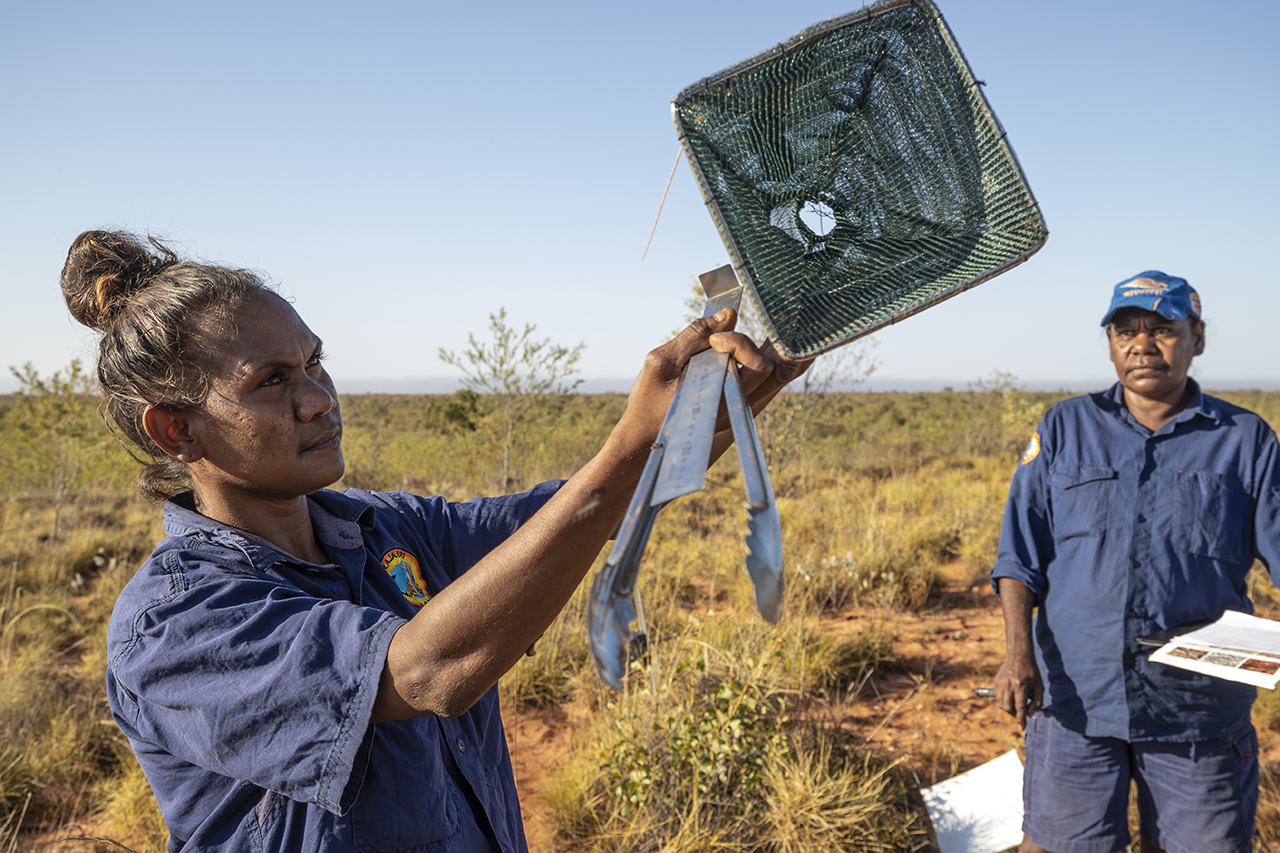
Indigenous Engagement Protocols: Forging respectful, meaningful partnerships for research impact
Wednesday, 21 October 2020 -
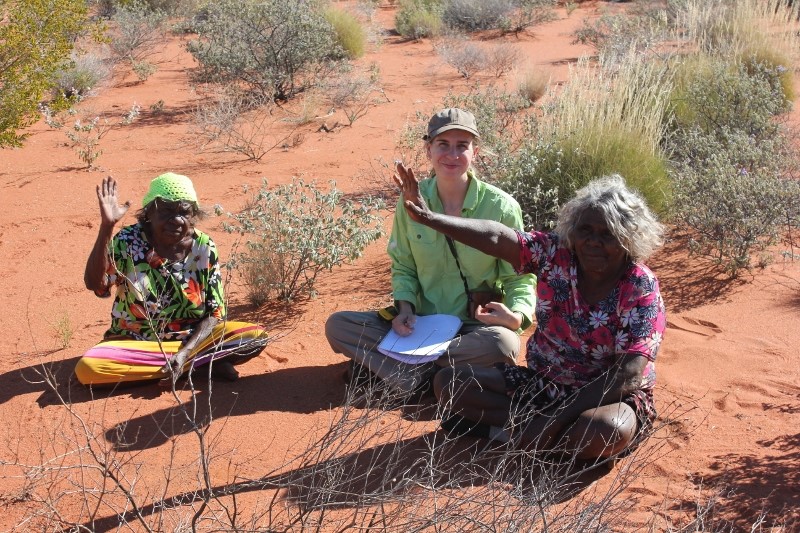
Designing a best-practice bilby monitoring program for Martu rangers
Thursday, 15 December 2016 -
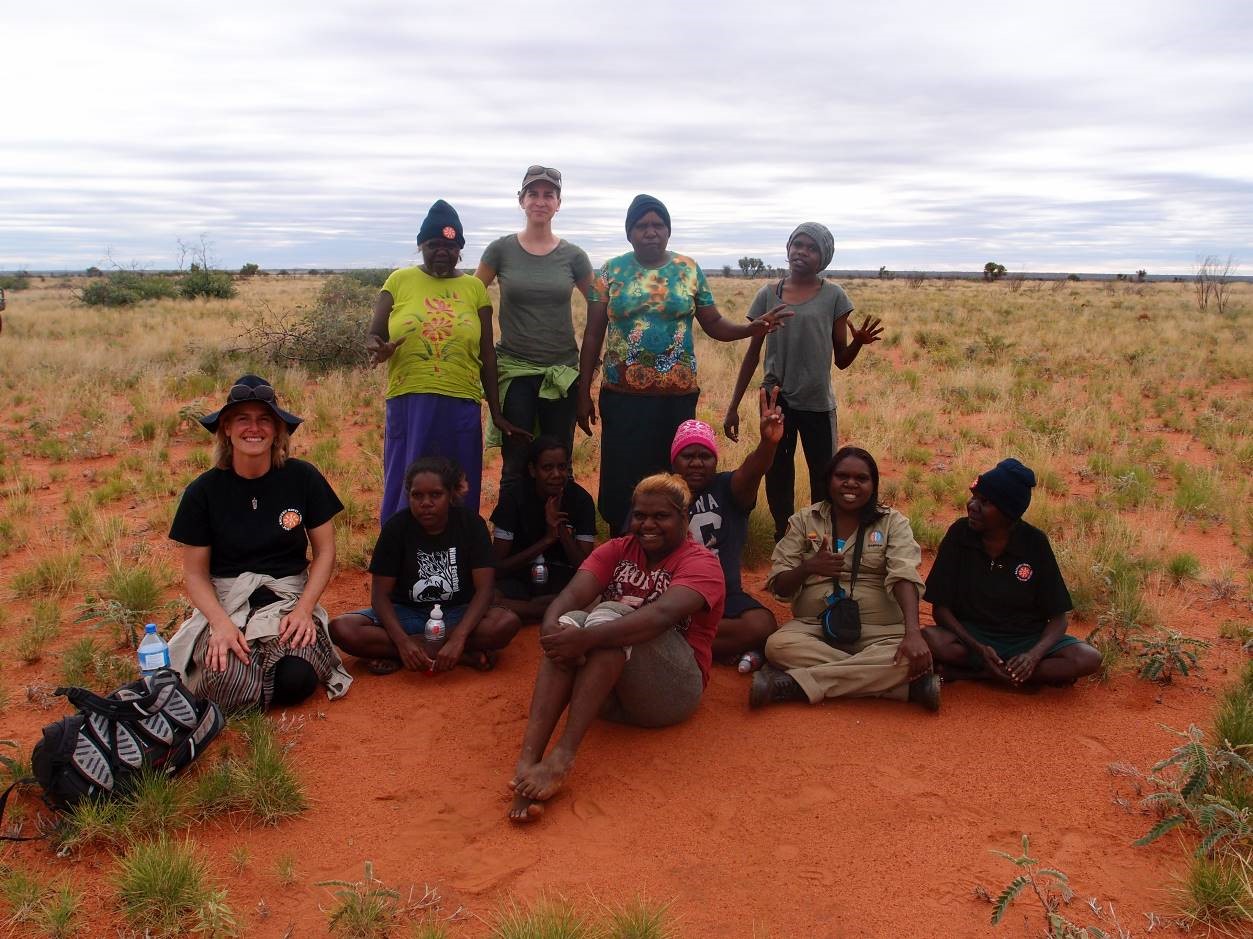
Endangered bilby connects communities across time and space
Wednesday, 06 July 2016 -
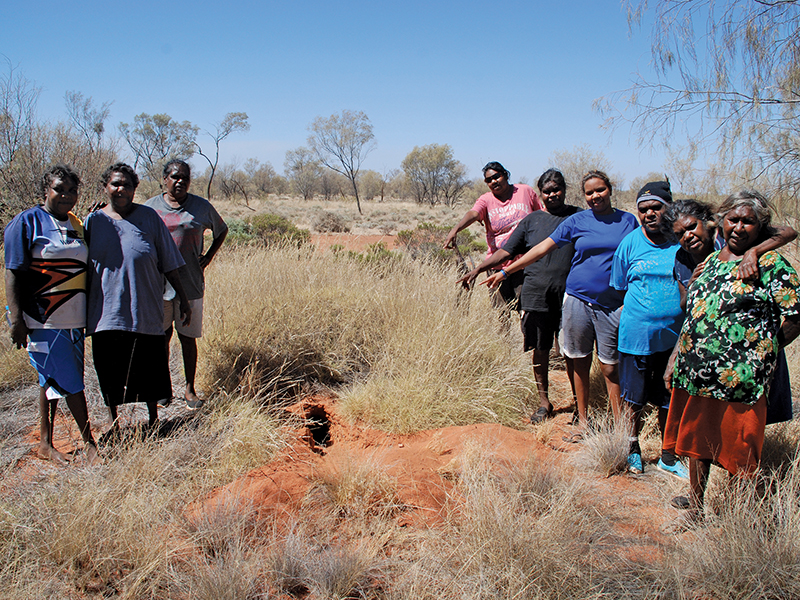
Indigenous land manager profile: Kanyirninpa Jukurrpa and Martu people
Tuesday, 30 June 2020 -
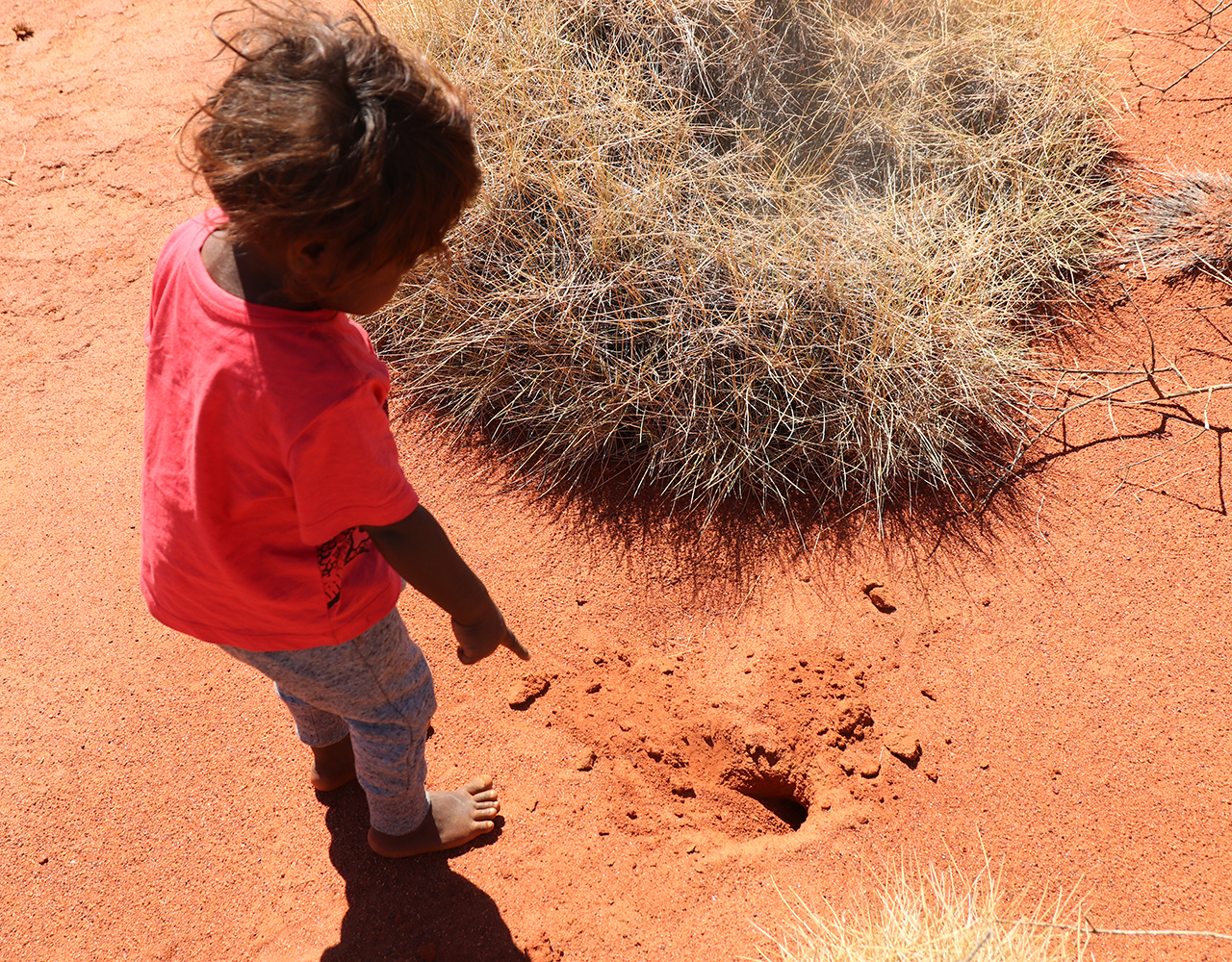
Kids learning to track Mankarr on Martu Country
Wednesday, 28 October 2020 -

Building collaboration and two-way science
Sunday, 12 December 2021
